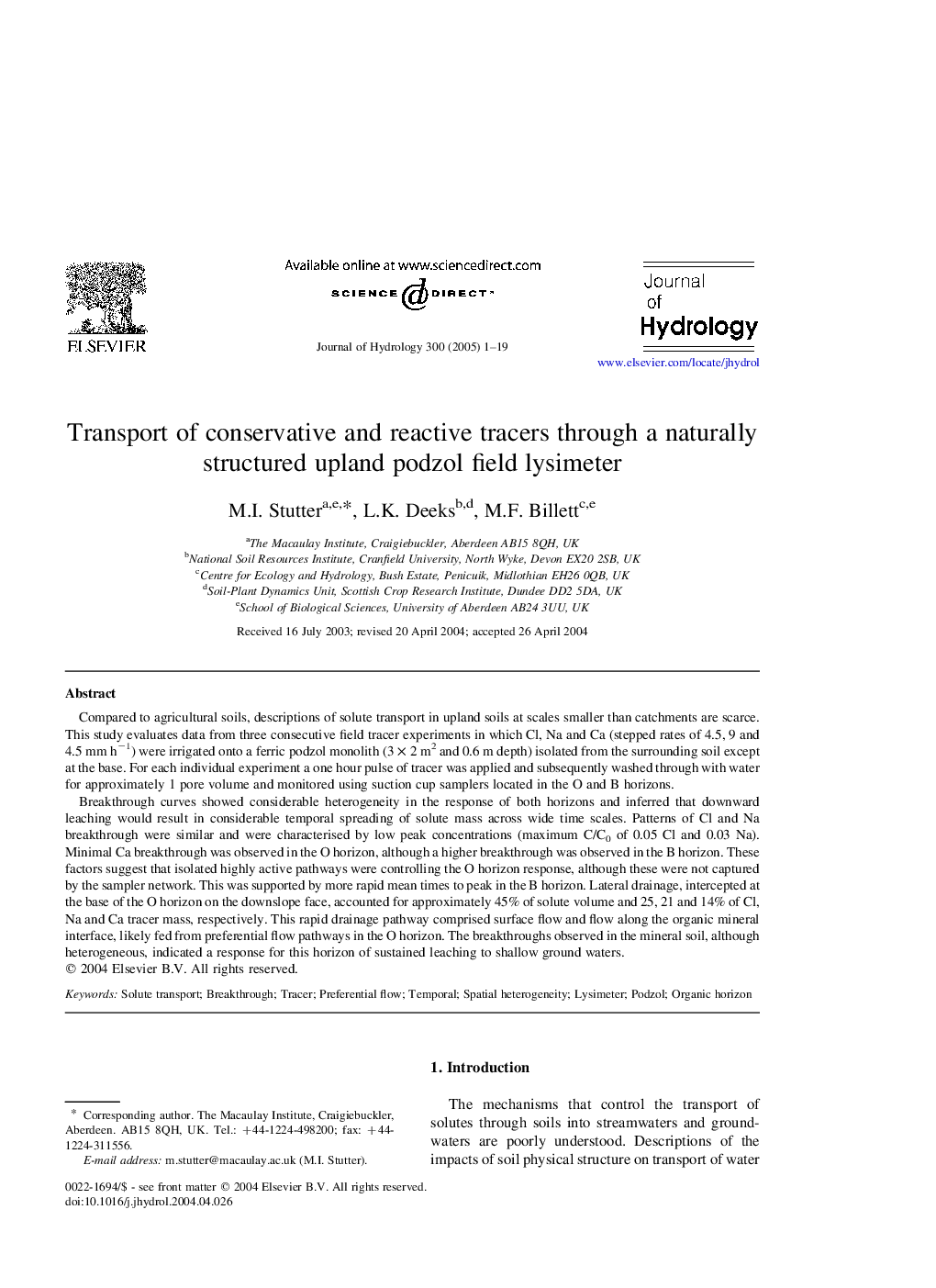| Article ID | Journal | Published Year | Pages | File Type |
|---|---|---|---|---|
| 9491593 | Journal of Hydrology | 2005 | 19 Pages |
Abstract
Breakthrough curves showed considerable heterogeneity in the response of both horizons and inferred that downward leaching would result in considerable temporal spreading of solute mass across wide time scales. Patterns of Cl and Na breakthrough were similar and were characterised by low peak concentrations (maximum C/C0 of 0.05 Cl and 0.03 Na). Minimal Ca breakthrough was observed in the O horizon, although a higher breakthrough was observed in the B horizon. These factors suggest that isolated highly active pathways were controlling the O horizon response, although these were not captured by the sampler network. This was supported by more rapid mean times to peak in the B horizon. Lateral drainage, intercepted at the base of the O horizon on the downslope face, accounted for approximately 45% of solute volume and 25, 21 and 14% of Cl, Na and Ca tracer mass, respectively. This rapid drainage pathway comprised surface flow and flow along the organic mineral interface, likely fed from preferential flow pathways in the O horizon. The breakthroughs observed in the mineral soil, although heterogeneous, indicated a response for this horizon of sustained leaching to shallow ground waters.
Keywords
Related Topics
Physical Sciences and Engineering
Earth and Planetary Sciences
Earth-Surface Processes
Authors
M.I. Stutter, L.K. Deeks, M.F. Billett,
